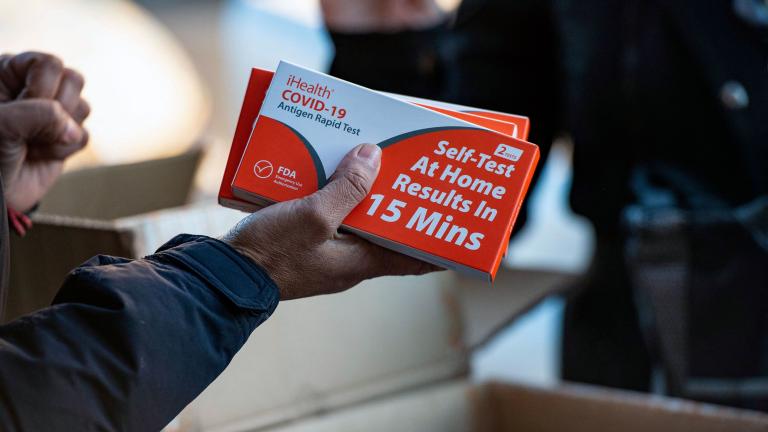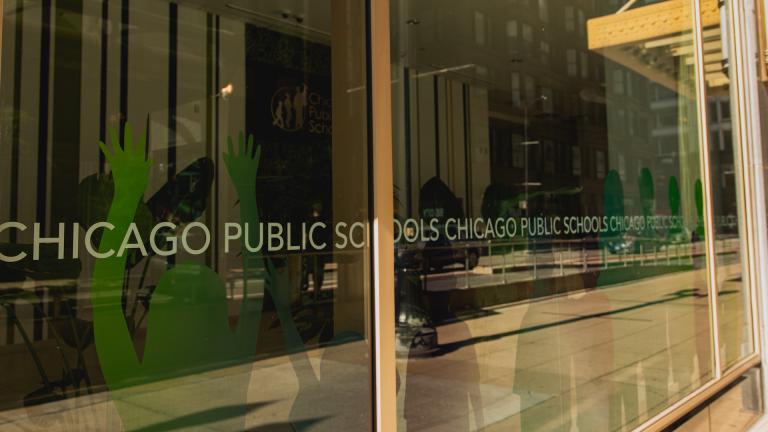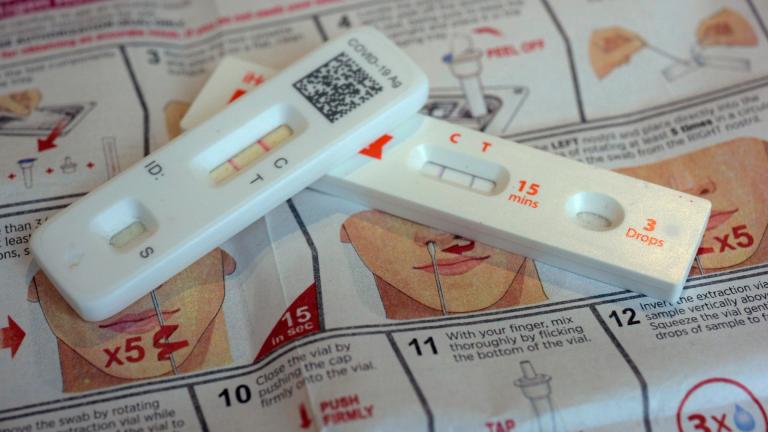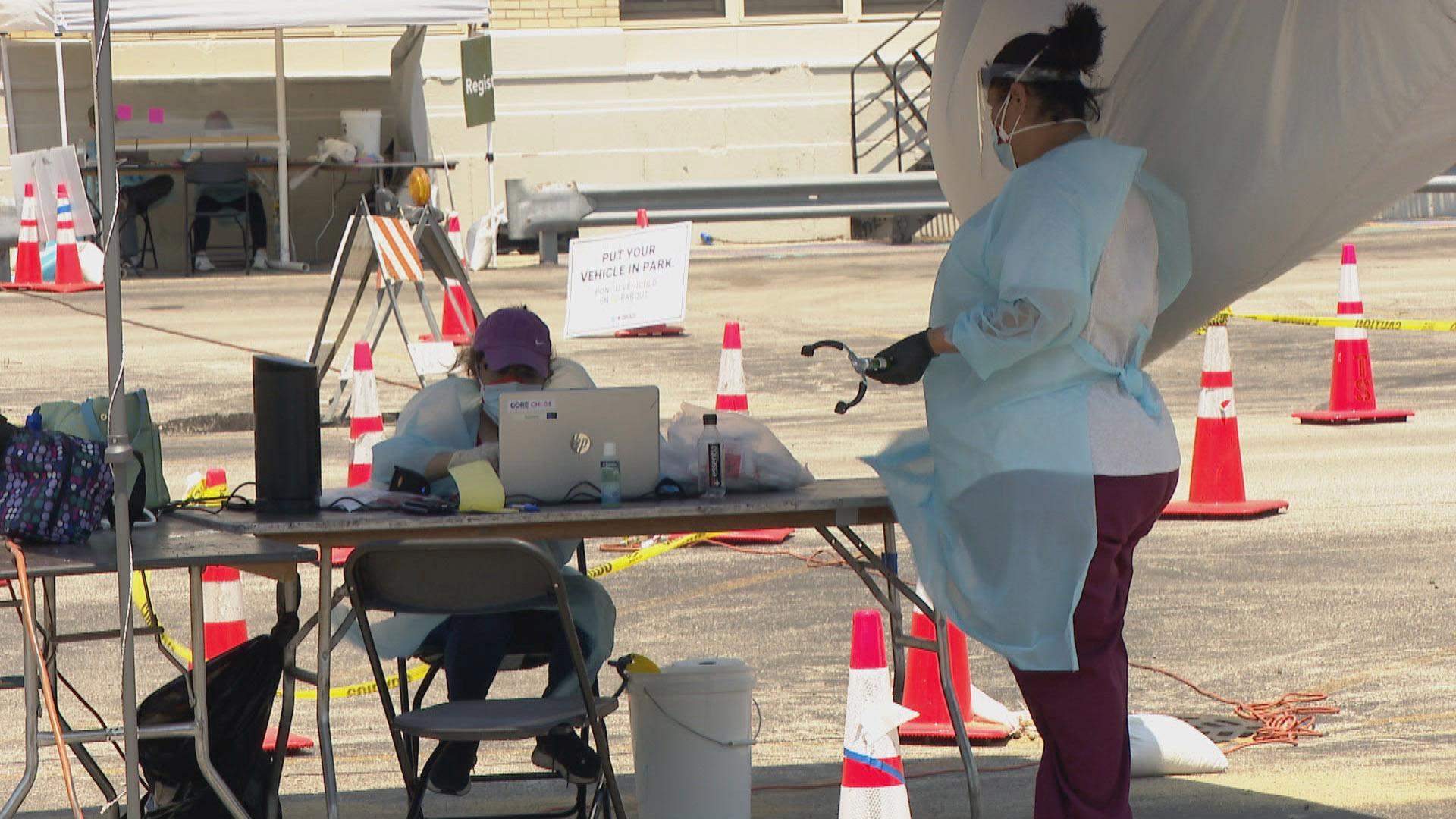 (WTTW News)
(WTTW News)
As state and city officials imposed sweeping restrictions designed to stop a sustained and grave surge of the coronavirus, Chicago health officials stopped showcasing the number of people who test positive for COVID-19 on the city’s data dashboard tracking the pandemic.
Instead, the data at chicago.gov/covid will emphasize the number of positive tests as compared with the total number of tests reported to city health officials.
The change was made to resolve a conflict between the Chicago Department of Public Health and the Illinois Department of Public Health that started at the beginning of the pandemic and became more pronounced amid a second wave of coronavirus cases that triggered new restrictions imposed in October that will last until at least December, said Dr. Allison Arwady, the commissioner of the Chicago Department of Public Health.
Through the end of July, the positivity rate calculated by Chicago compared the number of positive tests with the number of individuals tested within a 24-hour period. However, state officials calculated Illinois’ positivity rate by comparing the number of positive tests with the total number of tests reported to state health officials.
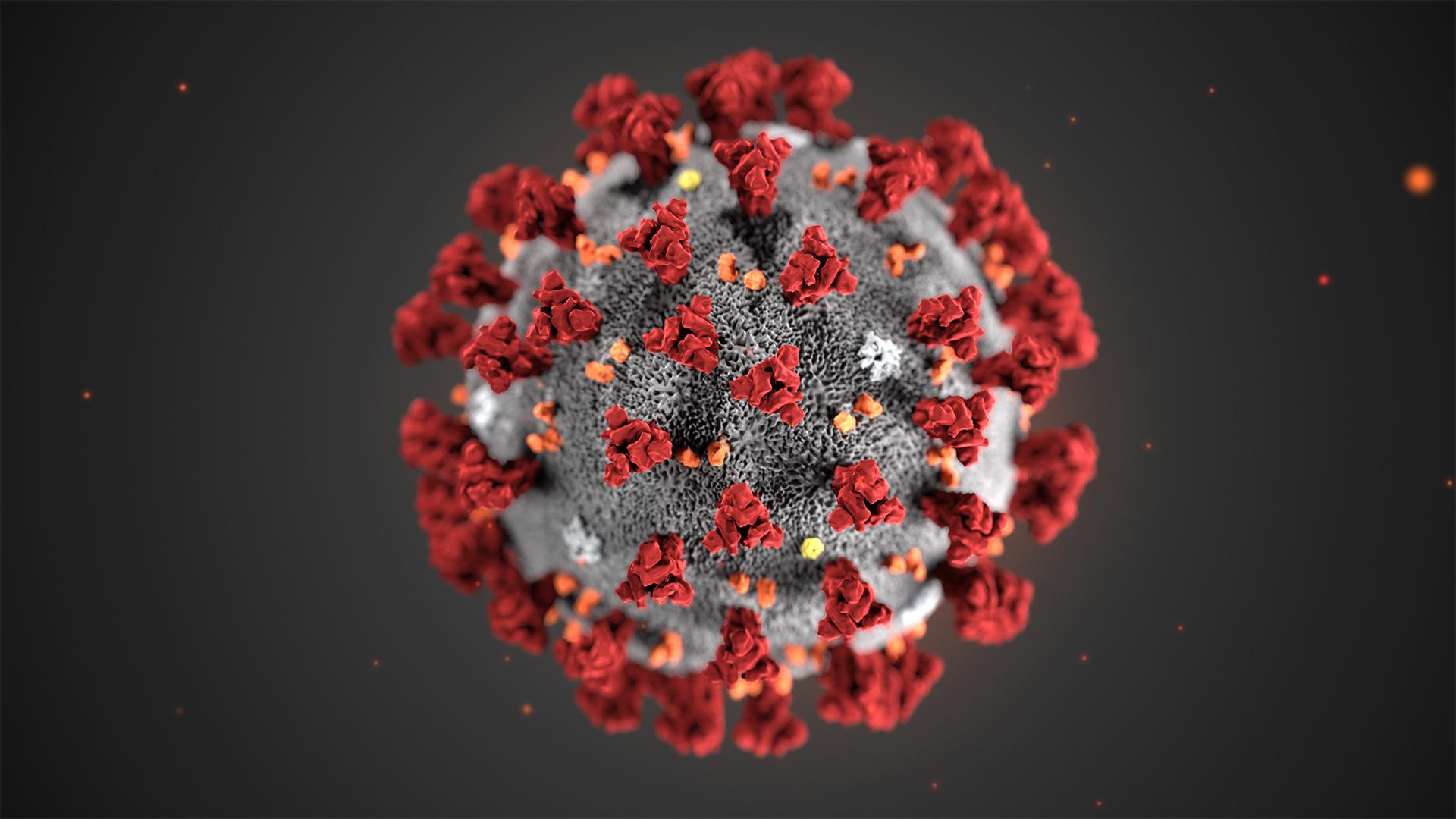 Full coverage of the COVID-19 pandemic from WTTW News.
Full coverage of the COVID-19 pandemic from WTTW News.
Based on a recommendation from the Centers for Disease Control and Prevention, IDPH used test positivity to determine when new restrictions were needed to stop the spread of the coronavirus starting in mid-July, state officials said.
The person positivity rate accounts for multiple tests conducted on the same person on the same day, Arwady said. One person could take multiple tests on the same day if they are hospitalized and doctors and nurses are concerned an initial test delivered an inaccurate result, while others might seek out multiple tests on the same day if they work in a place with an increased risk, like a long-term care facility, she added.
“We want to talk openly about data and use that data to drive decisions,” Arwady said.
Arwady told WTTW News in July that the person positivity rate is “more standard.”
“It gives us the best data to guide our response,” she said.
Arwady said the shift, announced Oct. 28, was designed to reduce confusion and acknowledge that it was important to focus on the city’s test positivity because that was being used to reimpose restrictions across the state and in Chicago. On Oct. 27, Gov. J.B. Pritzker suspended indoor dining and drinking in Chicago — and tightened restrictions on Nov. 20 as the surge continued.
“We wanted to align with the state,” Arwady said. “It can be confusing for people.”
Test positivity is crucial to determine if there is ample testing available, according to Johns Hopkins University, which has been tracking the pandemic.
While the test positivity rate can provide officials with important information, “it is not a measure of how prevalent the virus is in communities,” according to the university.
“We believe it is important to look at both people-centered calculations and test-focused calculations, as each provides different information about a state’s testing efforts,” according to the university.
A statewide test positivity rate of more than 5% indicates a state may only be testing the sickest patients who seek out medical care, and are not casting a wide enough net to identify milder cases and track outbreaks, according to Johns Hopkins University.
The city will continue to calculate the person positivity metric and publish it daily, Arwady said. That data is used to break down the impact of COVID-19 in each ZIP code as well as among racial groups, age groups and gender, Arwady said.
“We firmly believe you need to do that,” Arwady said. “It is non-negotiable and important.”
The change was not designed to de-emphasize or obscure the disproportionate impact that the pandemic was having on Black and Latino Chicagoans, Arwady said.
While the second wave of the pandemic that began in October has surged in all neighborhoods in Chicago, parts of the South and West sides remain among the hardest hit, according to data published by the Chicago Department of Public Health.
While the citywide test positivity rate averaged 12.4% on Friday, the person positivity hit 23% in the 60629 ZIP code on the Southwest Side, which includes Chicago Lawn and Gage Park. By comparison, in the 60614 ZIP code, which includes Lakeview and Lincoln Park on the North Side, the person positivity is 5.6%.
The original person positivity calculations published by the city were cumulative — which by the end of October included data all the way back to mid-March, Arwady said. That made it difficult for Arwady to explain the current status of pandemic, when some of the data included in the calculation was months old.
The city is now using two weeks’ worth of data — to capture the 14-day incubation period of the coronavirus — to calculate the person positivity rate in geographic areas and groups of people, Arwady said.
“I want people to trust this data,” Arwady said. “There is nothing we are trying to hide here at all.”
While Arwady said that consistency in the way governments and health agencies report data is key, the change was necessary because the state was basing restrictions on test positivity and the city’s data needed to reflect that reality.
“I want to be consistent so that people trust the data,” Arwady said.
However, that has been complicated by the decision by the Trump administration and the Centers for Disease Control and Prevention not to issue a federal rule setting a standard for state and local governments to follow, Arwady said.
“There was a missed opportunity at the federal level,” Arwady said.
In recent weeks, officials with the Illinois Department of Public Health have also made changes to the way they report data every weekday about the spread of the pandemic.
The total number of cases reported every day includes probable cases based on rapid tests that identify antigens, or proteins, produced by the coronavirus, after a change announced Nov. 13.
That followed a recommendation from the CDC, officials said.
Although they are accurate 90% of the time, antigen tests are considered less reliable than PCR tests, which detect the virus’s genetic material and are considered the gold standard of tests.
In addition, IDPH officials began reporting both statewide person positivity, which the state refers to as case positivity, and test positivity on Oct. 29.
“Case positivity and test positivity rate are both relevant and offer insight into the bigger COVID-19 picture,” according to a statement released by IDPH officials on Oct. 29. “Case positivity helps us understand whether changes in the number of confirmed cases is due to more testing or due to more infections. Whereas, test positivity accounts for repeated testing and helps us understand how the virus is spreading in the population over time.”
In another change from the spring and summer, Arwady and the Chicago Department of Public Health are no longer focusing on the total number of confirmed cases reported in Chicago per day, based on a rolling seven-day average, even though that data is still being reported.
That is due in part to epidemiologists’ growing knowledge about how the pandemic spreads and a surge in testing capacity in Chicago, Arwady said.
For months, Arwady said Chicagoans could be confident that the pandemic was in good control if that metric was less than 200 cases per day.
Arwady warned that if that average rose to more than 400 cases per day, the city would be forced to impose new restrictions — but city officials took no action after the average hit 442 cases on Oct. 15.
It was not until Oct. 22 that Mayor Lori Lightfoot imposed new restrictions on bars and other nonessential businesses — rules that were quickly overridden and tightened by Pritzker once the city exceeded the benchmarks for new restrictions set by state health officials.
There were 1,901 confirmed cases of COVID-19 per day in Chicago, on average, on Friday, according to Chicago health officials.
In mid-May, when Chicago hit an initial peak in COVID-19 infections, the city was averaging approximately 1,000 cases per day during a seven-day period, according to city data.
Contact Heather Cherone: @HeatherCherone | (773) 569-1863 | [email protected]



